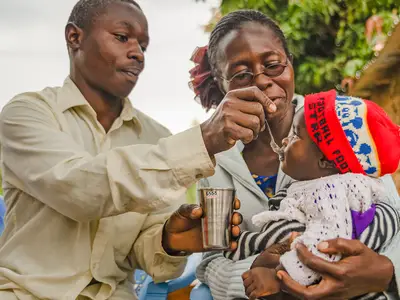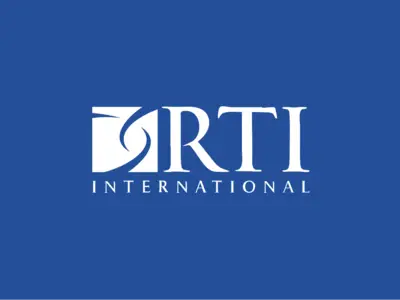Improving health and well-being associated with food, nutrition, and physical activity
For consumers to make better food choices, they need knowledge of nutrition and access to food that is both healthy and affordable. To improve public health and well-being through improved nutrition and physical activity and to prevent obesity, we analyze and evaluate our programs and policies to ensure they support the availability, accessibility, and affordability of healthy food and access to parks, sports/recreation facilities, and safe areas for walking and biking. On behalf of government agencies, foundations, and other clients, our goal is to improve health and well-being by informing programs and policies that promote a healthy and active lifestyle and help prevent chronic illnesses.

Nutrition for Precision Health Research Coordinating Center
RTI International and Cornell University’s Division of Nutritional Sciences are serving as the Research Coordinating Center for the National Institutes of Health (NIH) Common Fund’s Nutrition for Precision Health (NPH) study. The NPH program will build on recent advances in biomedical science including artificial intelligence (AI) and microbiome research to generate new data to provide insight into personalized nutrition also referred to as precision nutrition.

Assessing the Public Health Impacts of the Children's Food and Beverage Advertising Initiative
The Children’s Food and Beverage Advertising Initiative (CFBAI) is a voluntary industry initiative in which companies commit to feature only foods meeting specific nutrition criteria in advertising directed primarily to children under age 12. RTI linked household-based scanner data with nutrition label data to determine the extent to which U.S. households with children from 0 to 8 years purchase CFBAI-listed foods and to simulate the potential effects of reformulation because of changes to the nutrition criteria. The results of this study indicate the need to ensure that the design of voluntary industry initiatives will result in a positive public health impact.

Examining the Effects of Taxes and Warning Labels on Parents' Purchases of Sugar-Sweetened Beverages Using a Choice Experiment
Evidence suggests that sugar sweetened beverage consumption is positively associated with or influences whether children have obesity. To assess the combined effectiveness of including both taxes and warning labels on sugar-sweetened beverages to reduce parents' purchases, RTI is conducting a discrete choice experiment with funding from Robert Wood Johnson Foundation’s Healthy Eating Research Program.

Innovative Dissemination and Delivery Systems Through Local Parks and Recreation
With grant funding from CDC, the National Recreation and Parks Association (NRPA) developed different methods to expand, deliver, and disseminate arthritis-appropriate evidence-based interventions (AAEBIs) through local parks and recreation agencies to improve the health, wellness, and quality of life for individuals living with arthritis. RTI conducted a process and outcome evaluation of these AAEBIs through a semi-annual survey of grantees and qualitative methods (focus groups, site visits, and interviews) on an annual basis. Successful methods included (1) fostering partnerships between P&R departments and health systems and (2) expanding and delivering AAEBIs remotely.

Drivers of Food Choice Among Overweight Mothers and Children in Malawi
RTI collaborated with the University of Malawi to carry out a study to identify and explain predictors of dietary intake and food choice among Malawian mother–child dyads with an overweight mother, child, or both. The study had a longitudinal mixed-methods design that included measurement of anthropometry, surveys, observations, and qualitative data collection. Cost, taste, and food quality were the most important drivers of women’s food purchasing choices. Food group consumption was largely driven by maternal food preferences, household economic status, and household food security.

Alive & Thrive Implementation Research in Nigeria
RTI conducted two implementation research studies for Alive & Thrive, using mixed methods to assess the feasibility, acceptability, and impact of interventions to improve breastfeeding practices among clients of private health facilities in Lagos State and to improve complementary feeding practices by encouraging men’s involvement in child nutrition in Kaduna State. The intervention in Lagos increased exclusive breastfeeding at 6 and 24 weeks postpartum but had no impact on initiation of breastfeeding within 1 hour of delivery. The intervention in Kaduna increased children’s minimum meal frequency and their consumption of fish and eggs, which were two of the foods specifically promoted.

Evaluation of Food System Transformation Interventions in Kenya, Mozambique, Nigeria, and Uganda
RTI is conducting mixed methods quasi-experimental evaluations of the Global Alliance for Improved Nutrition’s project to transform food systems to improve diet quality and resilience for the most vulnerable in Kenya, Mozambique, Nigeria, and Uganda. The interventions are designed to improve accessibility, affordability, and safety of specific nutritious foods, coupled with behavior change communication, to shift norms and increase desirability of the foods among consumers. The evaluations are guided by the RE-AIM (reach, effectiveness, adoption, implementation, maintenance) framework. They include population-based individual-level surveys and market actor surveys to measure program impacts and qualitative and observations methods, which contribute to the process evaluation and program impact pathway analysis.
Related Projects
Navigating the Evolving Medical Nutrition Landscape
Read More about Navigating the Evolving Medical Nutrition Landscape





















